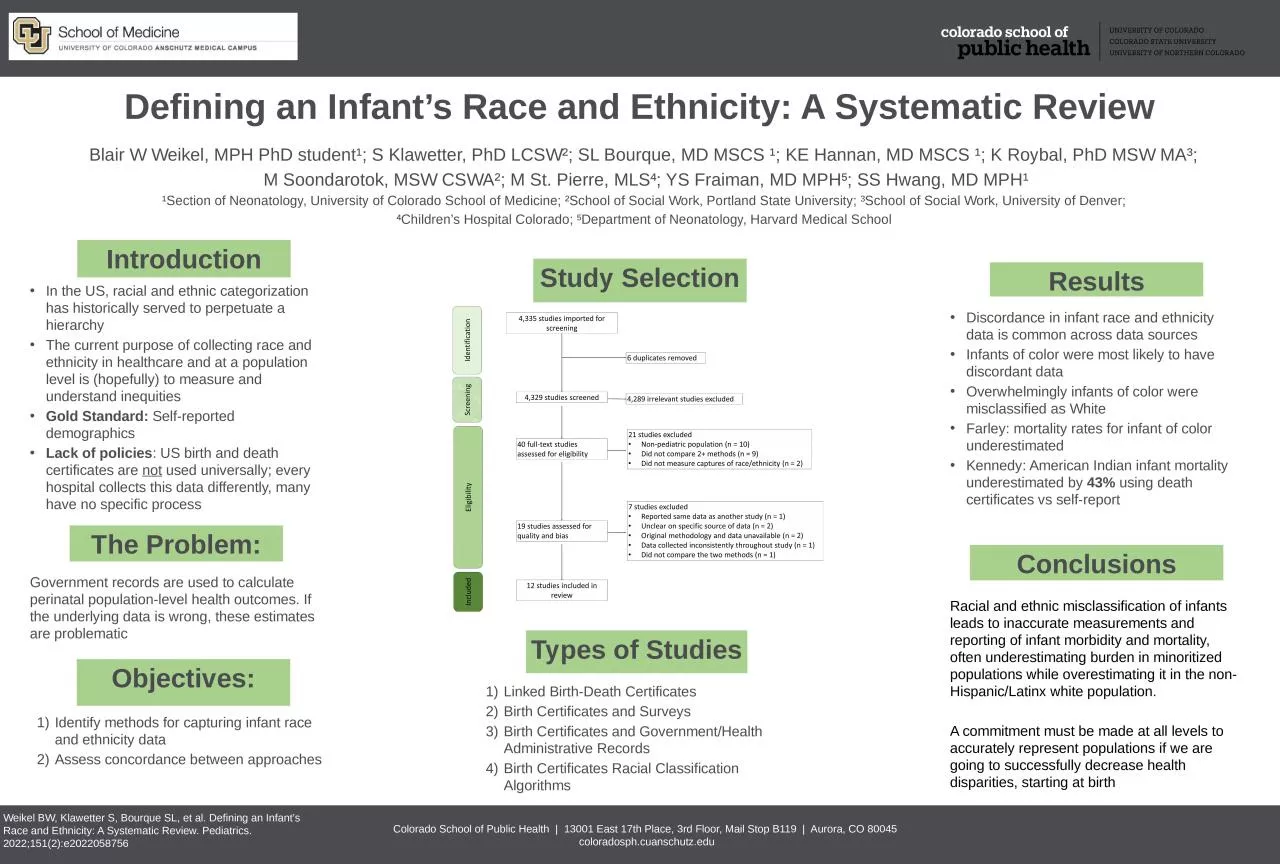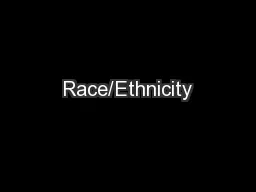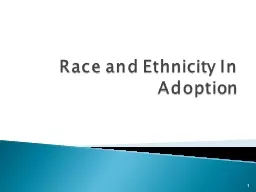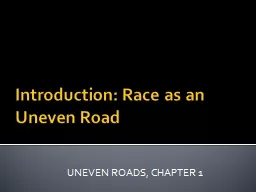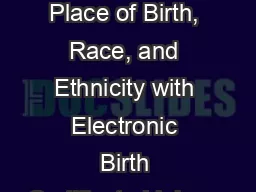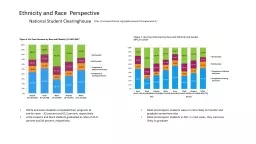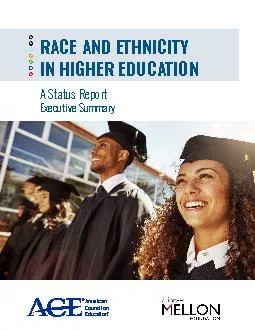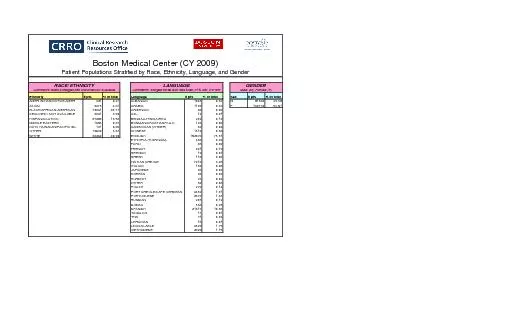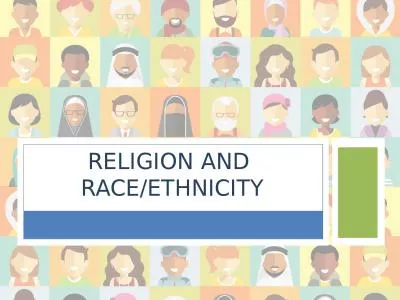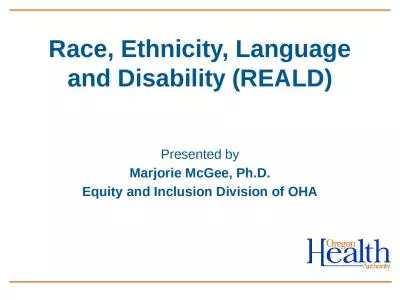PPT-Defining an Infant’s Race and Ethnicity: A Systematic Review
Author : natalie | Published Date : 2024-02-09
Blair W Weikel MPH PhD student¹ S Klawetter PhD LCSW² SL Bourque MD MSCS ¹ KE Hannan MD MSCS ¹ K Roybal PhD MSW MA³ M Soondarotok MSW CSWA² M St Pierre
Presentation Embed Code
Download Presentation
Download Presentation The PPT/PDF document "Defining an Infant’s Race and Ethnicit..." is the property of its rightful owner. Permission is granted to download and print the materials on this website for personal, non-commercial use only, and to display it on your personal computer provided you do not modify the materials and that you retain all copyright notices contained in the materials. By downloading content from our website, you accept the terms of this agreement.
Defining an Infant’s Race and Ethnicity: A Systematic Review: Transcript
Download Rules Of Document
"Defining an Infant’s Race and Ethnicity: A Systematic Review"The content belongs to its owner. You may download and print it for personal use, without modification, and keep all copyright notices. By downloading, you agree to these terms.
Related Documents

